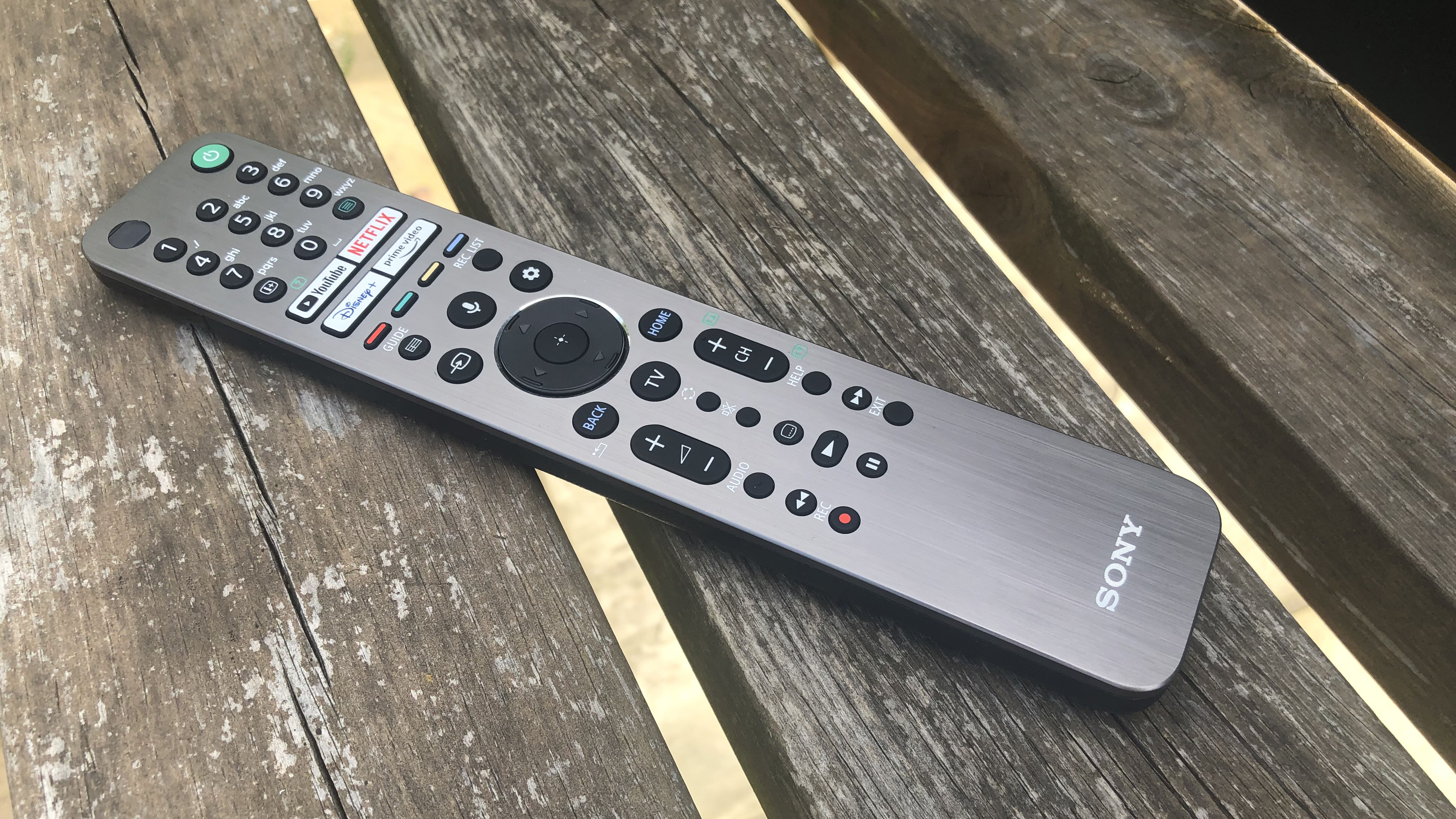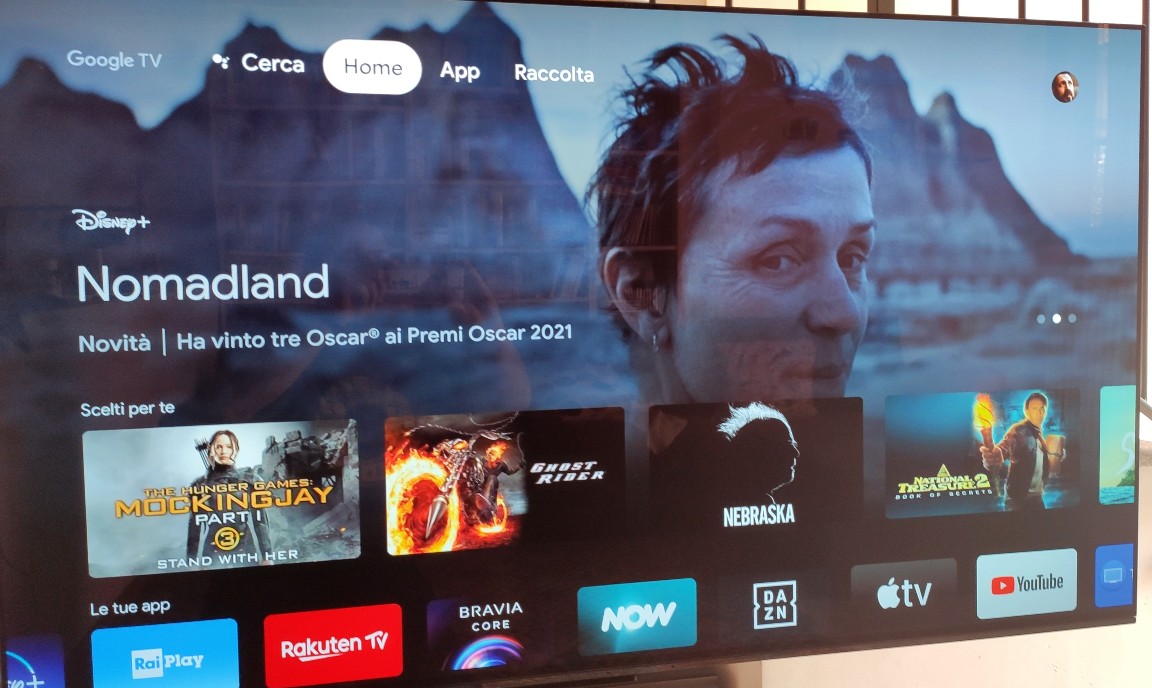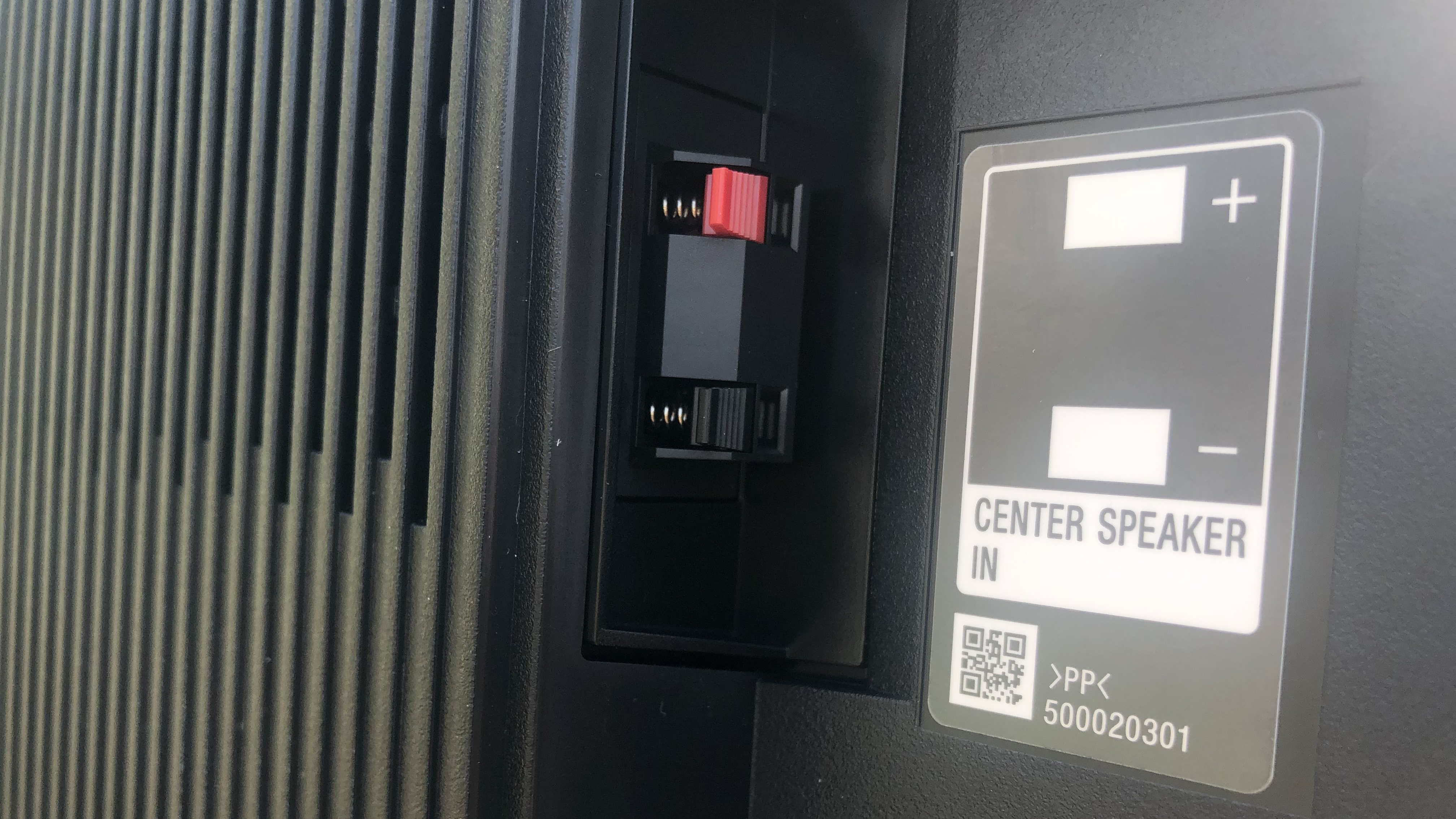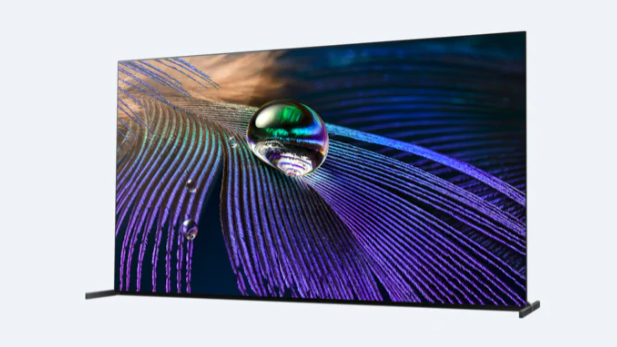Sony A90J OLED TV
One minute review
Sony certainly hasn’t held back in pricing its new A90J 4K HDR OLED TV – but this 55-inch version most certainly has the performance to justify the price.
Picture quality, from any source, is about as good as it currently gets from 4K screens. In every meaningful department – motion control, contrast, edge definition, detail levels, you name it – the XR-55A90J puts in a memorably accomplished shift. And for those moments when you’re reduced to watching sub-4K content, it’s a really adept upscaler too.
The Sony A90J OLED is more than a few steps ahead when it comes to sound quality, too. Using the entire surface of the screen as a speaker is still novel and effective, and backing it up with two conventional bass drivers means the XR-55A90J sounds fuller, more direct and just, well, better than any alternative that doesn’t feature an off-board sound system.
Add in a smart new Google TV interface, the usual Sony standard of build and finish, feet that change position to accommodate a soundbar, an exclusive movie streaming service, and an authentically well-designed remote control – ignoring the inexplicable lack of UK TV catch-up services – and the XR-55A90J looks like the complete package. And complete packages seldom come cheap.
Price and release date
The Sony XR-A90J range of OLED TVs is on sale now. It’s available in 65-inch ($3,799 / £3,499 / AU$4,999) and whopping 83-inch ($7,999 / £6,999) versions, while the 55-inch version we’re testing here will set you back $2,799 / £2,699.
This is, no two ways about it, a premium price when you consider (for instance) the LG C1 we called “the current king of TVs” will set you back $1,799 / £1,699 / AU$3,499 for the 55-inch model. Only the 65-inch pricing is confirmed in Australia for now.

Design
- 6mm deep at its slimmest point, and 41mm at its thickest
- Feet shift position to accommodate a soundbar
- HDMI 2.1 (up to a point)
Viewed head-on, the Sony A90J OLED is exactly what you want and expect from an expensive new TV: next-to-no bezel intrusion and an awful lot of screen.
The Sony A90J is an interesting case, because as well as being wall-mountable it also features feet that work in a couple of positions. They can either leave the bottom of the screen near-flush against the surface it’s standing on (although it’ll need to be a wide surface, as in the instance the feet are actually beyond the edges of the frame), or they can lift the screen high enough to fit a soundbar beneath it.
From the side, it’s OLED business as usual – which means the Sony is an impressively slim 6mm deep, but only for a little while. The rest of the time it’s a touch over 4cm, because it has to keep its electronics, its speaker drivers and what-have-you somewhere. It’s hardly a bloater, and will look good on the wall – but it’s worth bearing in mind that both LG (with its ‘Gallery’ series of OLED TVs) and Samsung (with its equally new Neo QLED MiniLED alternative) will sell you a screen that sits far flusher against a wall.
On the inside, the Sony is specified to justify that price-tag. Certainly you get your money’s-worth in terms of inputs and outputs: four HDMI inputs (two of which feature quite a lot of HDMI 2.1 compatibility), three USBs, an Ethernet socket, binding posts for two TV tuners and even composite video inputs should be enough to satisfy even the most demanding user. Naturally enough there’s Wi-Fi connectivity too.
The two most talented HDMI inputs are 4K/120Hz, ALLM and 48Gbps-enabled, and one of them can handle eARC too. There’s no support for VRR as yet, though. Sony’s PS5 games console doesn’t support VRR as yet, either, but the competing Xbox Series X console most certainly does. It seems likely any serious Xbox gamers will gravitate towards LG’s range of OLED TVs, where complete HDMI 2.1 compatibility has been the norm for quite a while now.
Sony is not alone among TV manufacturers in refusing to offer every major HDR standard, though admittedly we feel the lack of HDR10+ here less than we feel the lack of Dolby Vision on some new Samsung TVs. (Philips and Panasonic, of course, don’t make you choose.)
The picture is handled by Sony’s new XR processor, which takes the AI capability of the outgoing X1 processor and adds in something Sony calls “cognitive intelligence”. So (in theory, at least) you get machine-learning algorithms that enhance picture performance, plus more in-depth scene analysis across multiple zones based on the contrast, color, detail, depth of images and all of the other image components. The idea, of course, is to serve up the most lifelike and convincing images possible.
On the audio side, Sony is persevering with its Acoustic Surface Audio+ arrangement. Backed up by two rear-firing low-frequency drivers, this technology uses actuators to turn the entire surface of the screen into a speaker. It’s an impressive setup – and Sony’s so keen on the whole concept the A90J actually features speaker connections on its rear panel in case you want to use your TV as the centre channel of a surround-sound set-up.

Smart TV
- Google TV
- ‘Bravia Core’ streaming service
- No UK catch-up TV apps
Will anyone really lament Sony’s decision to ditch Android TV in favour of Google TV as its smart interface? Certainly Google TV’s implementation on the A90J makes for a more responsive and logical experience – it’s altogether friendlier and more useful.
As well as the obligatory Netflix, Amazon Prime Video, Disney Plus and Apple TV streaming service apps (and quite a few others), Sony’s also incorporated its Bravia Core movie-streaming service into the Google TV interface. It’s a genuinely worthwhile feature, with a stack of available content and the ability to stream in very high quality if your broadband is up to it – there’s even some IMAX Enhanced content on there.
It’s just a pity that selecting an IMAX Enhanced movie doesn’t automatically select the TV’s ‘IMAX Enhanced’ picture mode. The Sony’s set-up menus are a model of clarity, but there should really be no need to delve into them for reasons like this.
UK customers will be perturbed to find no sign of iPlayer, All4, ITV Hub or any other catch-up TV service here. Sony is promising a fix that will add them ‘later’ in 2021 – but we were disappointed that LG left out these services on its 2020 screens, and we’re disappointed to see the same here, even temporarily, given there’s no firm date or reassurance it’ll be relatively soon after launch.
Navigating the Google TV interface, set-up menus and all the rest is done using a redesigned remote control handset. It feels good in the hand, isn’t overburdened with buttons and even has some (very welcome) backlighting to aid visibility.

Picture quality
- Thoroughly enjoyable and convincing images
- Outstanding motion-handling
- Accomplished upscaling
It seems only polite to start the test with some content from Sony’s Bravia Core streaming service – and while broadband speeds around here aren't always enough to guarantee the highest-quality ‘Pure Stream’, Ridley Scott’s All the Money in the World, with its IMAX Enhanced certification, looks little short of superb.
There just isn’t an aspect of picture-making at which the A90J doesn’t excel. It’s remarkably bright by the standards of OLED TVs (LG has managed to pull off a similar trick with its ‘evo’ OLED panel – and as we all know, LG supplies raw OLED panels to every other TV brand that wants them). The Sony A90J is staggeringly detailed in any and all circumstances. The color palette from which it draws is wide, nuanced and unquestionably natural. The black tones it creates are deep and lustrous in the classic OLED manner, but they’re also simply loaded with detail – allied to the crisp and equally detailed white tones the A90J serves up, contrasts are about as wide and convincing as you’ll see from an OLED screen.
Management of even the most testing scenes is cast-iron. Christopher Plummer’s J. Paul Getty wears a classic hunting tweed during the first third of this movie, and the A90J keeps an absolute grip of the tight, high-contrast pattern – even when it’s moving.
In fact, the Sony proves outstanding at handling on-screen motion of any and every kind. Slow pans, fast movement, whatever – the Sony controls it and describes it without shimmer, or hesitation, or ghosting, or any of the other vices less capable TVs can indulge in.
This is particularly evident when catching up with some Euro 2020 football on BBC One HD (not iPlayer, with its 4K UHD streams, sadly), where the A90J upscales the HD broadcast in a natural manner, maintaining smooth motion for the movement of the ball – even if it’s moving in the opposite direction to the way the camera is panning. Huge swathes of uniform color (or ‘the pitch’, as it’s sometimes called) present no problems, and even though it’s doing a mighty amount of upscaling the Sony makes skin-tones and textures look life-like and detailed.
If there’s a more accomplished TV than this currently available at anything like this price, well, we’ve yet to see it.

Audio performance
- Direct, quite dynamic sound
- Worthwhile punch and impressive detail
- Picture still deserve a soundbar though
This isn’t the first time we’ve been impressed by Sony’s Acoustic Surface Audio+ and it seems unlikely to be the last. It’s one of the very best sound systems incorporated into a television - by which we mean it’s about the most convincing, most articulate and most believable-sounding television you can buy.
A lot of this is down to the fact that the entire screen is contributing – it means images and sounds are married far more closely than with other systems. Where dialogue in particular is concerned, the direct nature of the audio delivery helps the cinematic feel of the presentation no end.
By the standards of television audio systems, the A90J is a notably punchy and genuinely dynamic performer. It can generate actual low-frequency impact, thanks to that pair of rear-firing drivers, and is difficult for even the most explosion-happy blockbuster to fluster.
But it almost goes without saying the Sony A90J’s audio quality (impressive though it is by prevailing standards) doesn’t really hold a candle to its picture quality. So where we normally say a good TV requires a half-decent soundbar, the Sony A90J OLED deserves a really decent one.
Should you buy the Sony A90J OLED?

Buy it if…
You want as much performance as your money will buy
Where picture and sound quality is concerned, the Sony is impressive in every department.
You’re not sure if you will buy a soundbar
This Sony OLED TV can be placed in various positions, meaning you can change your mind as to your home cinema setup as you go.
You never liked Android TV anyway
The switch to Google TV as Sony’s smart TV interface will please pretty much everyone.
Don’t buy it if…
You like a bargain
The Sony A90J OLED is many things, but ‘cheap’ is not one of them.
You’re expecting a super-slim chassis
This isn’t the first OLED TV to overpromise and underdeliver where profile is concerned – and there are sleeker silhouettes out there.
You enjoy catching up with UK TV broadcasts
The omission of iPlayer and all the rest might be unforgivable, though will only affect UK viewers.
- Expect to see the Sony A90J OLED on our list of the best 4K TVs
0 comments:
Post a Comment